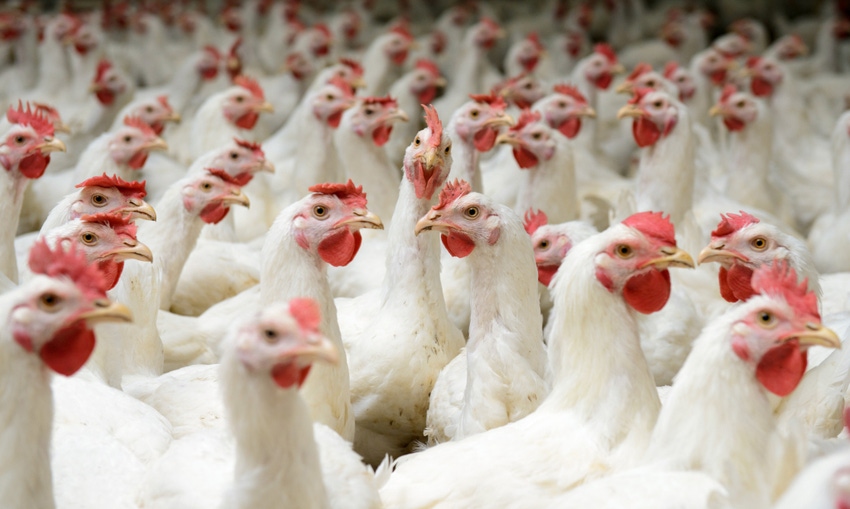Combinations of existing IBV vaccines did not provide protection to new strains.
April 24, 2018

The U.S. Poultry & Egg Assn. (USPOULTRY) and the USPOULTRY Foundation announced the completion of a funded research project at the University of Delaware in Newark, Del., in which researchers found that the European infectious bronchitis virus (IBV) vaccine does not protect against U.S. strains.
For the research project, Dr. Jack Gelb and colleagues at the University of Delaware examined the use of multiple strains of IBV vaccines to induce protection against new infectious bronchitis variants, USPOULTRY said.
According to Gelb, IBV outbreaks may be the consequence of improper vaccine application and associated vaccine back-passage or may be due to novel, non-vaccine related strains, often referred to as variants.
Modified live vaccines are commercially available to help control the disease, which is caused by numerous IBV strains, Gelb said. The most effective strategy has been to vaccinate chickens with commercial vaccines containing IBV strains that are most like those found in production settings.
A limited number of vaccine strains are available to control IBV, he added, noting that many are strains that have been used for years, such as Massachusetts (Mass), Connecticut (Conn), Arkansas (Ark) and Delaware (DE) 072/Georgia (GA) 98. In 2014, a newer variant, GA 08, received a conditional vaccine license from the U.S. Department of Agriculture.
Gelb said in recent years, chicken health professionals have been interested in evaluating the European/International 4/91 vaccine because of its reported ability to induce a broad spectrum of IBV immunity; a vaccine capable of inducing protection against many different types of IBV is of practical and economic importance.
Few U.S. trials have included the 4/91 strain because these vaccines are not licensed for use in U.S. poultry, Gelb explained. The objective of this research was to determine how best to utilize current vaccines as well as to evaluate the ability of the international 4/91 vaccine to protect against U.S. IBV strains.
IBV vaccines are often applied multiple times and in combination. Prior research has demonstrated that the Mass/Ark vaccine combination has been shown to offer some cross-protection against unmatched serotype viruses found in the field, Gelb reported.
Since live IBV vaccines are known to interfere with live Newcastle disease virus vaccine replication and resultant immunity, it is likely that interference can also occur among IBV vaccine strains. Massachusetts IBV vaccine virus replication was not affected by concurrent delivery with other IBV vaccines; however, replication of Arkansas and Delaware type viruses were. Observed differences did not consistently affect protection from virulent challenge 21 days after vaccination, Gelb said.
In terms of vaccine efficacy, Mass and Ark challenge data showed the greatest variation between the different vaccine programs, he reported. All vaccination programs, regardless of match to challenge virus, did decrease oral IBV shedding compared to non-vaccinated birds, Gelb added. Lowering the amount IBV in the production environment may help limit its transmission.
The ability of commercial IBV vaccines to induce protection against current relevant and evolving variants needed to be reassessed due to changing vaccination practices (available vaccines, application methods, etc.). However, the selection of vaccines permitted for use should be limited to viruses present in a region, Gelb concluded.
Introduction of IBV vaccines containing strains not found in a region may further complicate the management of IBV as well as overall poultry health for years to come. Gelb said his study found that the addition of the 4/91 vaccine to a multi-valent IBV vaccine program did not significantly improve protection against currently circulating variant viruses.
You May Also Like


.png?width=300&auto=webp&quality=80&disable=upscale)
